August 10
“My fellow Americans, we gather here today to right a grave wrong. More than 40 years ago, shortly after the bombing of Pearl Harbor, 120,000 persons of Japanese ancestry living in the United States were forcibly removed from their homes and placed in makeshift internment camps. This action was taken without trial, without jury. It was based solely on race.
“Yes, the Nation was then at war, struggling for its survival, and it’s not for us today to pass judgment upon those who may have made mistakes while engaged in that great struggle. Yet we must recognize that the internment of Japanese-Americans was just that: a mistake.”
~President Ronald Reagan
Signing Civil Liberties Act of 1988 Bill
==================================================
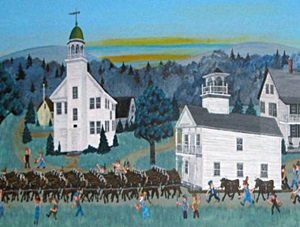
1835 – A mob began smashing the fence in front of Noyes Academy in Canaan, NH. The men assembled a team of 90 oxen to literally pull the school from its foundation.
The school had opened that year with 28 white and 17 African-American students. Many local residents objected to allowing blacks into the town to attend the academy, which they called a “nuisance” in a town meeting.
It would take several days, uncounted quantities of rum and lots of broken chains, but eventually the group had the school pulled to the town common to await the selectmen’s decision on where to put it.
On September 10, the mob reassembled. It hauled much of the wreckage to a swamp. They burned the remains.
Following the destruction of the school, the black students, fearing for their safety, left town, as did George Kimball, a local attorney who had helped to found the school.
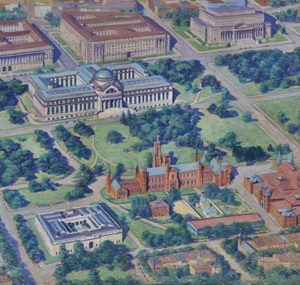
1846 – An act establishing the Smithsonian Institution was signed into law by President James K. Polk.
In 1829, British scientist James Smithson died in Italy, leaving behind a will with a peculiar footnote. In the event that his only nephew died without any heirs, Smithson decreed that the whole of his estate would go to “the United States of America, to found at Washington, under the name of the Smithsonian Institution, an Establishment for the increase and diffusion of knowledge.”
Six years after his death, his nephew, Henry James Hungerford, died without children, and on July 1, 1836, the U.S. Congress authorized acceptance of Smithson’s gift.
After considering a series of recommendations, including the creation of a national university, a public library, or an astronomical observatory, Congress agreed that the bequest would support the creation of a museum, a library, and a program of research, publication, and collection in the sciences, arts, and history.
The photo above shows the Smithsonian as it was in 1936. Today, it is composed of 19 museums and galleries, nine research facilities throughout the United States (and the world) and the national zoo.
Smithsonian Factoid: James Smithson died in 1829 and was buried in Genoa, Italy. At the request of Alexander Graham Bell, a regent for the Smithsonian, Smithson’s remains were moved to Washington, DC in 1904.
It was the first time Smithson had ever touched American soil.
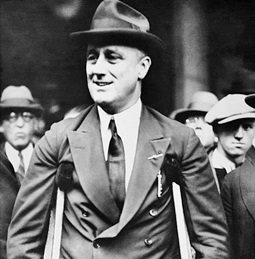
1921 – Former Assistant Secretary of the Navy (and future Governor of New York and president of the United States) Franklin D. Roosevelt was vacationing at Campobello Island (one of the Fundy Islands and part of Charlotte County, New Brunswick, Canada) when he fell seriously ill.
His main symptoms were fever; symmetric, ascending paralysis; facial paralysis; bowel and bladder dysfunction; numbness and hyperesthesia; and a descending pattern of recovery.
Roosevelt was left permanently paralyzed from the waist down. He was diagnosed with poliomyelitis at the time, but his symptoms are more consistent with Guillain–Barré syndrome – an autoimmune neuropathy which Roosevelt’s doctors failed to consider as a diagnostic possibility.
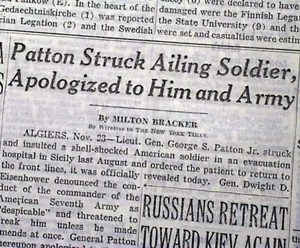
1943 – For the second time in one week, Lt. Gen. George S. Patton struck an enlisted man.
On August 3, 1943, Patton had slapped and verbally abused Private Charles H. Kuhl at an evacuation hospital in Sicily after he had been found to suffer from “battle fatigue”.
On August 10, Patton slapped Private Paul G. Bennett under similar circumstances.
Ordering both soldiers back to the front lines, Patton railed against cowardice and issued orders to his commanders to discipline any soldier making similar complaints.
When word of the incidents reached Lieutenant General Dwight D. Eisenhower, the Supreme Allied Commander, he privately reprimanded Patton and insisted he apologize.
Patton apologized to both soldiers individually, as well as to doctors who witnessed the incidents, and later to all of the soldiers under his command in several speeches.
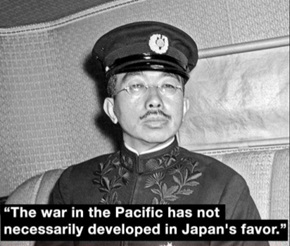
1945 – One day after the bombing of Nagasaki, Japan submitted its acquiescence to the Potsdam Conference terms of unconditional surrender. In return, President Harry S. Truman ordered a halt to atomic bombing.
Emperor Hirohito, having remained aloof from the daily decisions of fighting the war, finally felt compelled to do more.
At the behest of two Cabinet members, the emperor summoned and presided over a special meeting of the Council and implored them to consider accepting the terms of the Potsdam Conference, which meant unconditional surrender.
“It seems obvious that the nation is no longer able to wage war, and its ability to defend its own shores is doubtful.“
The Council had been split over the surrender terms, but in light of the bombing of Hiroshima on August 6, Nagasaki on August 9, and the Soviet invasion of Manchuria, as well as the emperor’s own request that the Council “bear the unbearable,” it was agreed: Japan would surrender.
Tokyo released a message to its ambassadors in Switzerland and Sweden, which was then passed on to the Allies.
When the message reached Washington, President Truman, unwilling to inflict any more suffering on the Japanese people, especially on “all those kids,” ordered a halt to atomic bombing.
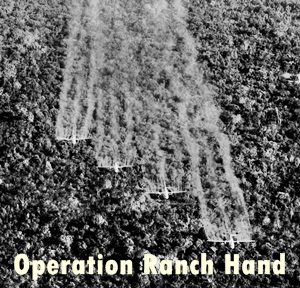
1961 – The U.S. Army began Operation Ranch Hand with an aerial spraying of herbicides in a village north of Dak To, a village in the Central Highlands of Vietnam and in the so-called “tri-border” area where the borders of Vietnam, Laos, and Cambodia come together.
Operation Ranch Hand began in earnest in 1962 and by the time it ended in 1971, the U.S. had sprayed an estimated 20 million gallons of defoliants and herbicides over rural areas of South Vietnam in an attempt to deprive the Viet Cong of food and vegetation cover.
The herbicides included Agent Orange which had a devastating effect, not only on 3 million Vietnamese civilians, but also on United States military who handled the chemicals, as well as those who happened to be in and around the many targeted drop zone areas throughout the Vietnam War.
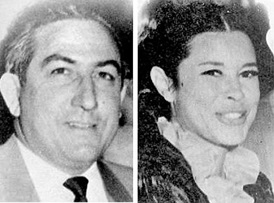
1969 – A day after murdering Sharon Tate and four others, members of Charles Manson’s cult killed supermarket executive Leno LaBianca and his wife, Rosemary.
Six “Family” members — Leslie Van Houten, Steve “Clem” Grogan, and the four from the previous night – Tex Watson, Susan Atkins, Patricia Krenwinkel, and Linda Kasabian – drove to the house, accompanied by Manson.
Displeased by the panic of the victims at Cielo Drive the previous night, Manson accompanied the six “to show them how to do it.”
According to Watson, Manson woke the sleeping Leno LaBianca from his couch at gunpoint and had Watson bind his hands with a leather thong. After Rosemary was brought briefly into the living room from the bedroom, Watson followed Manson’s instructions to cover the couple’s heads with pillowcases.
He bound these in place with lamp cords. Manson left, sending Krenwinkel and Van Houten into the house with instructions that the couple be killed.
I will spare you the incredibly graphic details of what followed.
While the murders were taking place, Manson, Grogan, Atkins and Kasabian continued to Venice Beach where Manson sent the trio to kill actor Saladin Nader, but Kasabian led them to the wrong apartment and the plan was aborted.
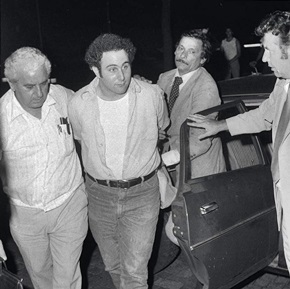
1977 – 24-year-old postal employee David Berkowitz was arrested and charged with being the “Son of Sam,” the serial killer who terrorized New York City for more than a year, killing six young people and wounding seven others with a .44-caliber revolver.
There was some question about whether Berkowitz was mentally fit to stand trial, but on May 8, 1978, he withdrew an insanity defense and pleaded guilty to the six .44-caliber murders. He was given six 25-years-to-life sentences for the crime, the maximum penalty allowed at the time.
He has since been denied parole. Since 1987, he has been held at the Sullivan Correctional Facility in upstate New York

1985 – Michael Jackson paid $47.5 million to buy ATV Music.
Owned by an Australian billionaire named Robert Holmes à Court, ATV owned the rights to 251 songs from the Beatles’ catalogue (as well as 4000 other songs).
Attorney John Branca asked John Lennon’s widow, Yoko Ono, who ran Lennon’s estate, if she was interested in teaming up with McCartney to purchase ATV. Ono said no and reportedly gave her blessing for Jackson to own the songs.
Branca then asked Paul McCartney’s lawyer if McCartney wanted to buy ATV, and was told the catalogue was too expensive.
Turns out Ono and McCartney didn’t realize the catalogue’s financial potential.
In 1995, Sony paid Jackson $90 million for half the rights, forming a joint venture called Sony/ATV.
In 2016, Sony/ATV purchased the Jackson estate’s remaining 50 percent of Sony/ATV for $750 million.
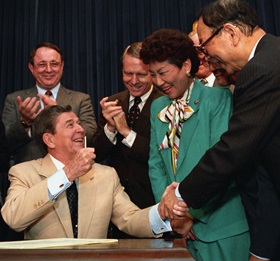
1988 – President Ronald Reagan signed the Civil Liberties Act of 1988, providing $20,000 payments to Japanese Americans who were either interned in or relocated by the United States during World War II.
Japanese American internment was the forced removal and confinement of approximately 120,000 Japanese Americans (62% of whom were United States citizens) from the West Coast of the United States during World War II.
Some 5,500 Japanese American men arrested by the FBI after the bombing of Pearl Harbor were sent directly to internment camps run by the Department of Justice, and approximately 5,000 were able to “voluntarily” relocate to other parts of the country before forced evacuations began.
The remainder were sent to “relocation centers,” hastily constructed camps in remote portions of the nation’s interior, run by the War Relocation Authority.
President Franklin Roosevelt authorized the internment with Executive Order 9066, which allowed local military commanders to designate “military areas” from which “any or all persons may be excluded.”
This power was used to declare that all people of Japanese ancestry were excluded from the entire Pacific coast region, including all of California and most of Oregon and Washington, except for those in government custody.
In 1944, the Supreme Court upheld the constitutionality of the exclusion, removal, and detention, arguing that it is permissible to curtail the civil rights of a racial group when there is a “pressing public necessity.”
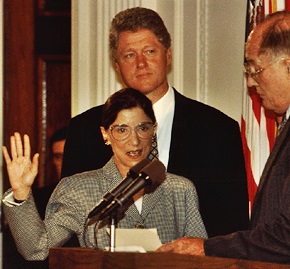
1993 – Ruth Bader Ginsburg was sworn in as the second female Supreme Court justice.
During her testimony before the U.S. Senate Judiciary Committee as part of the confirmation hearings, she affirmed her belief in a constitutional right to privacy and explained at some length her personal judicial philosophy and thoughts regarding gender equality.
However, she refused to answer questions about her view on the constitutionality of some issues such as the death penalty as it was an issue that she might have to vote on if it came before the court.
Nominated to the Court by President Bill Clinton, the U.S. Senate confirmed her by a 96 to 3 vote.
The three negative votes came from Don Nickles (R-Oklahoma), Bob Smith (R-New Hampshire), and Jesse Helms (R-North Carolina), while Donald W. Riegle Jr. (D-Michigan) did not vote.

2008 – American swimmer Michael Phelps won the first of a record eight gold medals at the Beijing Olympics by smashing his own world record in the 400-meter individual medley.
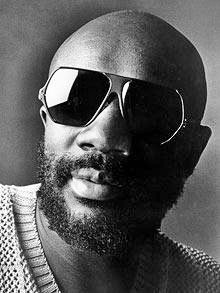
2008 – Isaac Hayes, the pioneering singer, songwriter and musician whose “Theme From Shaft” won Academy and Grammy awards, was found dead at his home in Memphis after an apparent stroke. He was 65.
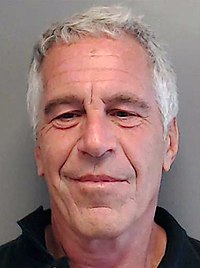
2019 – Jeffrey Epstein, awaiting trial on sex trafficking charges, was found dead in his cell in a special housing unit at the Metropolitan Correctional Center in New York City.
When Epstein was placed in the special housing unit, the jail informed the Justice Department that he would have a cellmate, and that a guard would look into the cell every thirty minutes. These procedures were not followed on the night of his death.
On August 9, 2019, Epstein’s cellmate was transferred out, but no one took his place. Later in the evening, contrary to the jail’s normal procedure, Epstein was not checked every thirty minutes. The two guards who were assigned to check his jail unit that night fell asleep and did not check on him for about three hours; the guards falsified related records. Two cameras in front of Epstein’s cell also malfunctioned that night.
On August 16, 2019, Barbara Sampson, the New York City medical examiner, ruled Epstein’s death a suicide by hanging.
Compiled by Ray Lemire ©2023 RayLemire.com. / Streamingoldies.com. All Rights Reserved.
